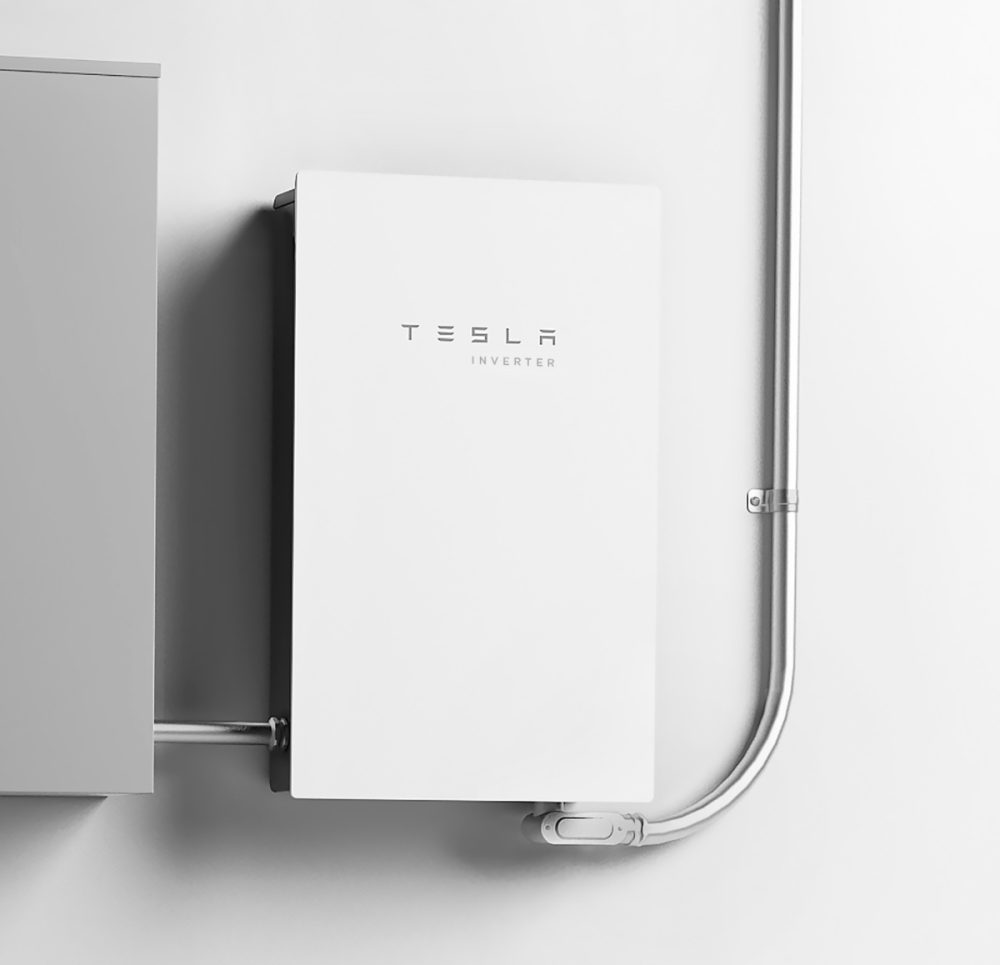
Tesla (TSLA) is launching its own solar power inverter, which completes the company’s home solar offering along with the Powerwall.
Tesla Solar Inverter
Tesla has been offering its own solar power solution since the acquisition of SolarCity back in 2016.
One of Elon Musk’s strategies when master-minding the acquisition was for Tesla to differentiate itself in the market with different products, which have become somewhat of commodities in the solar industry.
The automaker tried to make its own solar panels, but it didn’t work out.
However, Tesla has had success with its Powerwall, a home battery pack that matches well with a residential solar installation, and it is starting to have some success with its solar roof tiles.
Surprisingly, considering Tesla’s extensive expertise in power electronics in its electric vehicles, the company never had its own solar power inverter, an important part of a solar installation… until now.
Now the company is adding a new in-house designed ‘Tesla Solar Inverter’ to its lineup:

The company describes its latest product from its energy division offering:
“Tesla Solar Inverter completes the Tesla home solar system, converting DC power from solar to AC power for home consumption. Tesla’s renowned expertise in power electronics has been combined with robust safety features and a simple installation process to produce an outstanding solar inverter that is compatible with both Solar Roof and traditional solar panels. Once installed, homeowners use the Tesla app to manage their solar system and monitor energy consumption, resulting in a truly unique ecosystem experience.”
The new inverter is already being installed with new Tesla solar installations according to new buyers. You can visit our Tesla solar guide for more information about Tesla rooftop solar panel installations and solar roof tiles.
Tesla lists some of the key features and specs of its new Solar Inverter:
Tesla Solar Inverter Key Features and Specs
- Built on Powerwall 2 technology for exceptional efficiency and reliability
- Wi-Fi, Ethernet and cellular connectivity with over-the-air updates
- Designed to integrate with Tesla Powerwall and Tesla app
- 3.8 kW and 7.6 kW models available
| Power 3.8 kW / 7.6 kW 2 / 4 maximum power point trackers 97.5% efficiency |
Installation Indoor or outdoor -22°F to 113°F |
| Size 26″ x 16″ x 6″ 660 mm x 411 mm x 158 mm |
Certifications Meets US and international safety standards Meets US and international safety EMI standards |
| Weight 52 lbs |
Safety Integrated rapid shutdown, arc fault and ground fault protection |
| Warranty 12.5 years |
Electrek’s Take
This is an unsurprising development. The most surprising thing is that it didn’t happen before with Tesla’s extensive expertise in power electronics.
It should give Tesla greater control over the overall system design and monitoring.
However, the specs are noting ground-breaking.
Prior to having its own solar inverter, Tesla has been known to use Delta and SolarEdge inverters.
Many argue that the most important feature of a solar inverter is its efficiency and at 97.5%, it’s a bit better than Delta’s 97% but not as good as SolarEdge’s 99% efficiency.
That said, there are some nice of features to the Tesla Solar Inverter, like 4 point trackers, which can be useful if your solar modules are coming from different strings on different parts of your roof – something that can be very likely with a solar roof tile installation.
Another great thing about the Tesla Solar Inverter is the over-the-air update capability, which means the company could improve on the product’s software over time.
Finally, the greatest advantage (although it’s uncertain) is potentially the cost. Tesla could potentially be able to achieve a better cost than the competition by leveraging its already large power electronic production capacity for its electric vehicles and charging stations.
Subscribe to Electrek on YouTube for exclusive videos and subscribe to the podcast.
Author: Fred Lambert
Source: Electrek



